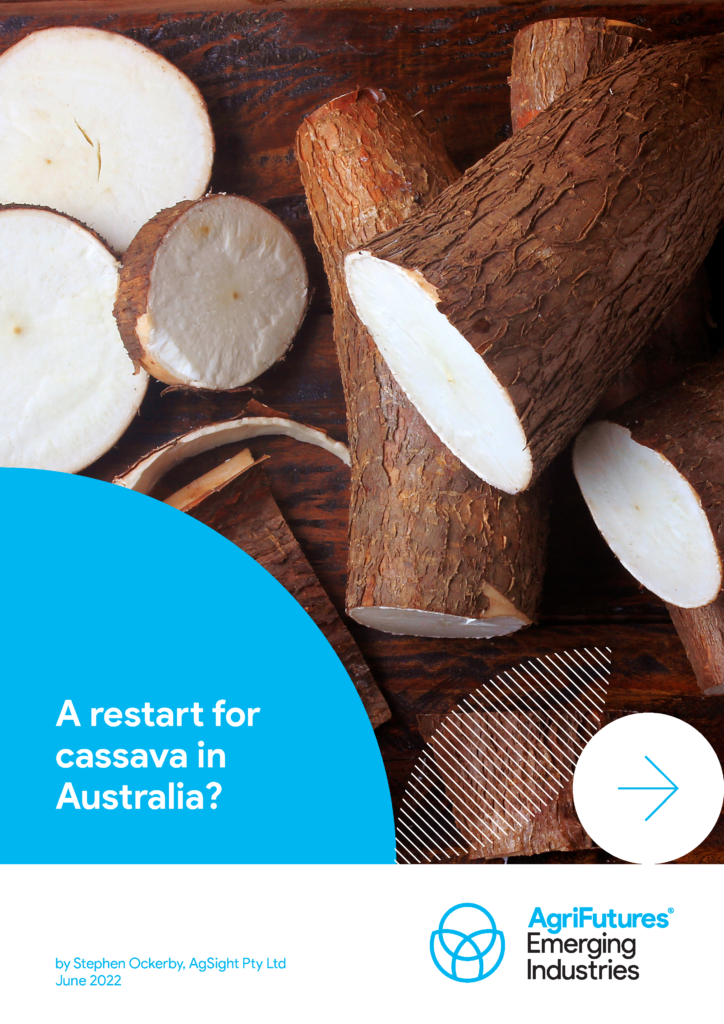Cassava (Manihot esculenta Crantz) is a tropical species that grows in coastal regions extending from Carnarvon in Western Australia (WA), across northern Australia, and down the Queensland coast to the New South Wales border. Cassava provides leaf protein and root carbohydrate, and can assist with sustainable food production. It is the fifth-largest food crop for humans and is traditionally a crop for the poor as it grows sustainably in marginal environments. It carries great importance with respect to food security, equity, poverty alleviation and environmental protection.
Since the mid-1920s, cassava has been the focus of several initiatives to create alternate and diverse farming systems across northern Australia. Despite cassava being an important food crop and animal feed in tropical regions globally, Australian research has predominately focused on using cassava an alternate energy source. There are only a handful of cassava producers in Australia and they operate independently of each other. There is no industry association and support to develop a cassava industry is lacking.
This report details the findings of the project ‘Remastering cassava in Australia’. The work aimed to revive the knowledge base and increase expertise that has been developed in Australia since 1970.





